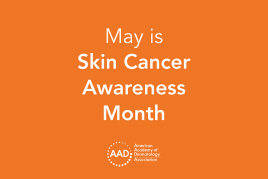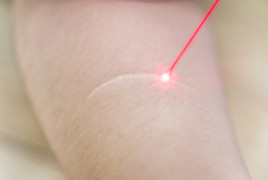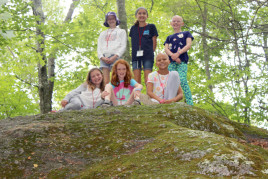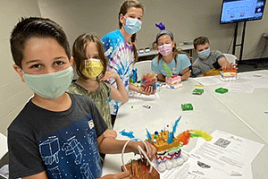Hair care: Dandruff (ages 8-10)
Good Skin Knowledge lesson plan
Time: 30 min
Objective
Students will be able to:
Explain the simple process of how to wash hair and daily habits to take care of it
Describe dandruff and ways to treat it
Understand dandruff does not mean you are dirty
Materials
Assessment
During Introduction to New Material, assess whether students understand the mnemonic device and repeat the steps using it.
During the Independent Practice, observe whether students are correctly filling out the worksheet.
Opening
2 minutes
Explain they will be playing a short game of True or False.
Do not give out answers just yet.
True or False statements:
You need a lot of shampoo to clean your hair.
Everyone should wash his/her hair every day.
Dandruff means you have dirty hair.
Explain they will go over these questions again at the end of class.
Introduction to new material
10-15 minutes
Explain that taking care of our hair is important. When we wash our hair in the shower, we should actually be washing our scalp!
Some people wash their hair every day, others do not. It depends on what kind of hair you have (oily/dry) or what you have been doing. If you are exercising or swimming, for example, you should wash your hair after your activity.
Tell them mnemonic device to remember steps: We Sold Mean Red Dirty Chickens.
Have students repeat the mnemonic device twice after him/her.
Go over what each letter stands for and holds up picture representing each step.
Wet, Shampoo, Massage, Rinse, Dry, Comb
Wet your hair well.
Shampoo your hair. You only need a little bit of shampoo—no bigger than the size of a quarter.
Massage the shampoo into your scalp. Be gentle! Don’t scratch your head too hard. Use your fingertips.
Rinse your hair thoroughly until you don’t see any more soap or bubbles.
Dry your hair gently with a towel.
Use a comb with big teeth. You might have to use detangler so you don’t tear your hair.
After this, some might blow dry your hair, but it is best to let it air dry when possible.
To reinforce material, ask what the special sentence is to remember the steps to wash our hair.
Say, “Sometimes we can get dandruff. Can anyone tell me what dandruff is?”
If students respond, build off what they say.
If students don’t know or are unresponsive, prompt them by saying something along the lines of, “There are a lot of TV commercials for dandruff shampoo. They look like white little flakes in your hair. Have you seen those (ads) before?”
Explain that dandruff is actually just skin and that it is common for people to have dandruff. Many people think someone has dandruff for the wrong reason. They may call the person “dirty” because they think dandruff is dirt, but it is not (Stress this point). Dandruff comes from your scalp. They are little bits of skin that flake off.
Go on, “If you have dandruff, don’t worry! They have all types of special dandruff shampoos to help. Your parents can help you with it because sometimes they have special ingredients.”
Independent practice
10-15 minutes
Materials: Hair Care Steps worksheet
Hand out Hair Care Steps worksheet.
Explain, “Above each box it has a word from the sentence, “We sold red mean dirty chickens” above it. Next, you will each see a letter and blank spaces. You are to fill in each step of the hair care process. Each blank space stands for a letter. In each box, you can draw a picture to represent each step. You can make them silly if you want! The last question on the worksheet is about dandruff: “What is dandruff?” All you have to do is circle the correct answer.”
Pass out crayons. Walk around to check on students’ work and answer any questions.
Closing
Time may vary
Ask the students towards the end of class what each word above the boxes stands for. Students may call out answers or raise hands.
Ask for the answer to the last question, “What is dandruff?”
Ask if any students would like to show their drawing and explain them to him/her or the class.
 Think sun protection during Skin Cancer Awareness Month
Think sun protection during Skin Cancer Awareness Month
 How to care for your skin if you have lupus
How to care for your skin if you have lupus
 Practice Safe Sun
Practice Safe Sun
 Sunscreen FAQs
Sunscreen FAQs
 Fade dark spots
Fade dark spots
 Hidradenitis suppurativa
Hidradenitis suppurativa
 Laser hair removal
Laser hair removal
 Scar treatment
Scar treatment
 Botox
Botox
 Kids' camp - Camp Discovery
Kids' camp - Camp Discovery
 Dermatologist-approved lesson plans, activities you can use
Dermatologist-approved lesson plans, activities you can use
 Find a Dermatologist
Find a Dermatologist
 Why choose a board-certified dermatologist?
Why choose a board-certified dermatologist?